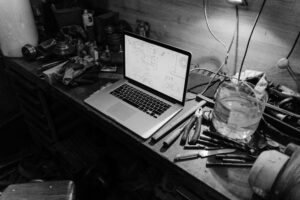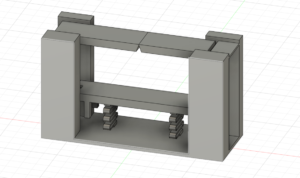If you’ve never encountered the phrase ‘design like a farmer,’ it refers to the idea of overdesigning something far beyond what’s necessary for its intended purpose. To clarify, this concept is similar to the ‘overdesigning’ often seen in engineering. When an engineer designs a part or component, they analyze its intended function and the conditions it must operate under. This includes calculating the forces or stresses that will be applied to the part. These calculations influence the design, ensuring the part is robust enough to prevent failure under these conditions. When finalizing the design, engineers don’t just aim for the minimum required performance; they intentionally overdesign it to accommodate for several expected and possible unexpected variables. But at what point does overdesigning become impractical? Or even when does it become expected to overdesign ‘like a farmer’? Lets first go through specific reasons for overdesigning, the design ranges, and what it may look to significantly overdesign.
As a heads up, this post is not about literally designing how farmers design, or even implying that farmers designs things in one expected way, but simply as a dissection of what the phrase means.
Over design like and Engineer
Overdesign isn’t just a practice for cautious engineers; it’s an essential component of a well-functioning design. It not only ensures the functionality of a component but also contributes to maintaining economic practicality and simplifies the design of interacting components. Therefore, a more relevant question to ask is, ‘how much of an allowable tolerance should an engineer overdesign for’? The following involves some factors that go into the considerations for these tolerances;
Safety margins
Engineers want to make sure the system can handle unforeseen stresses, loads, or conditions. A small safety margin ensures that in case of unexpected factors, the structure or system will still perform well.
Wear and Tear
The lifetime of a designed part, depending on what it is used for, can undergo constant use or bombardment from external factors. It can be difficult to measure these real-world conditions, so overdesigning helps prevent failure.
Degradable Environments
Certain designs must operate in environments that gradually degrade the surface over time. These designs are typically created for a ‘design life’ in mind, and adjustments are made to ensure they remain functional throughout this period.
Regulatory Compliance
Some industries have strict safety regulations or standards that may require designs to exceed minimal functional requirements for the set conditions.
Future Proofing
Engineers may overdesign to account for potential future upgrades, changes, or unforeseen circumstances. This ensures that the system can adapt to new demands or technologies.
Taking the Conservative Approach
It’s common to see engineers err on the side of caution. Reasonable overdesigning typically means higher costs upfront but fewer possibilities for risks in the long run.
Cost of Failure
In certain industries (like aerospace, medicine, or infrastructure), the consequences of a failure can be catastrophic, both in terms of human lives and costs. Overdesign helps to mitigate those risks.
Over-designing – General Percentages
Depending on which elements are most relevant to a given set of conditions, the specific threshold will vary accordingly. While the exact value may depend on the engineering company, client involvement, or special circumstances, industries typically have established factors to ensure proper overdesign. This is evident through various phases of engineering calculations, where the final result is often multiplied by a specific factor to achieve the necessary overengineered outcome. The following involves some general guidelines used by differing industries. These, however, should not be considered indefinitely for any specific engineering project without the proper consideration first:
Structural Engineering
Engineer here commonly use a safety factor of 1.5x to 3x for static loads, which means they design for 50% to 200% higher than the expected load. For example, if a beam is expected to carry 1000 lbs, it might be designed to withstand 1500 to 3000 lbs.
Mechanical Engineering
For mechanical components like gears, shafts, or pressure vessels, the safety factor could range from 1.2x to 2x the expected load or stress, which corresponds to a 20% to 100% overdesign. Pressure vessels, for example, are often designed for 100% or more over the expected pressure to handle unexpected pressure spikes.
Aerospace Engineering
Aerospace components, like aircraft wings or parts of spacecraft, are typically designed with safety factors in the range of 1.5x to 2.5x. This means a part expected to withstand 1000 lbs might be designed for up to 2500 lbs.
Electrical Engineering
For electrical components, the overdesign can be around 20% to 50% higher than the expected load. For instance, if a transformer is expected to handle 100A, it might be designed for 120A to 150A.
Consumer Products
In consumer products, engineers typically overdesign by 10% to 30% to account for manufacturing variances, wear and tear, and unintended usage.
Safety Margins in Software/Systems Engineering
While it’s a bit different, in systems engineering and software, engineers might design for an overhead of 30% to 50% in system capacity (like servers, bandwidth, etc.) to ensure that unexpected load spikes can be handled without failure.
‘Design Like a Farmer’
Now, let’s dive into the phrase ‘to design like a farmer.’ This concept involves overdesigning something to an extreme degree, far beyond its intended use. Think of it like this: A farmer—or anyone, really—who buys a rideable lawnmower might use it in an environment with bumps and obstacles that put overly extensive stress on the axle, eventually causing it to break. They could replace the axle with one of the same type, designed for specific tolerances, or they could opt for a much thicker, more durable steel rod, knowing it will withstand the same harsh conditions they plan to put it through again. This example illustrates taking a lawnmower, designed to function within a specific set of conditions, and using it in environments for which it was not intended, but still helps illustrate massively overdesigning to get something to work.
There are several factors that this approach helps accommodate. While extensive overdesign can be costly, it offers the advantage of reducing the need for precise calculations, to some extent. Instead of meticulously calculating the required forces and loads, one can allow for a larger tolerance, eliminating concerns about potential failure while bypassing extensive calculations. This approach is often used by individuals without formal engineering training, where, in some cases, a design can be ‘felt out’ and still perform well. However, this method should be approached with caution by anyone outside their area of expertise, as failures in certain designs can lead to serious safety risks. It must be stressed that calculations are still important, as they take into consideration of hidden factors that are not immediately apparent when assessing it to the untrained eye.
But let’s say, for arguments sake, that we know fully well of all the proper considerations required, but do not want to forgo extensive calculations. Where can this sort of design philosophy be practically applied in a real world project? Some scenarios can involve separate engineering firms working together to complete a single project where some design loads were completed by one company to provide to the other. When situations like this happen, all official documentation will be provided by the engineering company that is calculating the final loads and handed to the receiving company. While this documentation is ensuring, the receiving company may choose how they decide to act on the information. Rather than following the typical overdesigning percentages, they could decide to use their own guidelines of an even higher percentage in their designs. this is one example, but there could be multitudes of reason why excessive over engineering could be applied to a design.
Conclusion
While over-analyzing a phrase within the engineering and design industry may seem excessive, it can provide some insight in understanding what it actually means. This can solidify our understanding of concepts and even discover when it may be appropriate to apply a minutiae of the intent into our own designs. I you would like to add more to the topic, please comment and continue the conversation.






